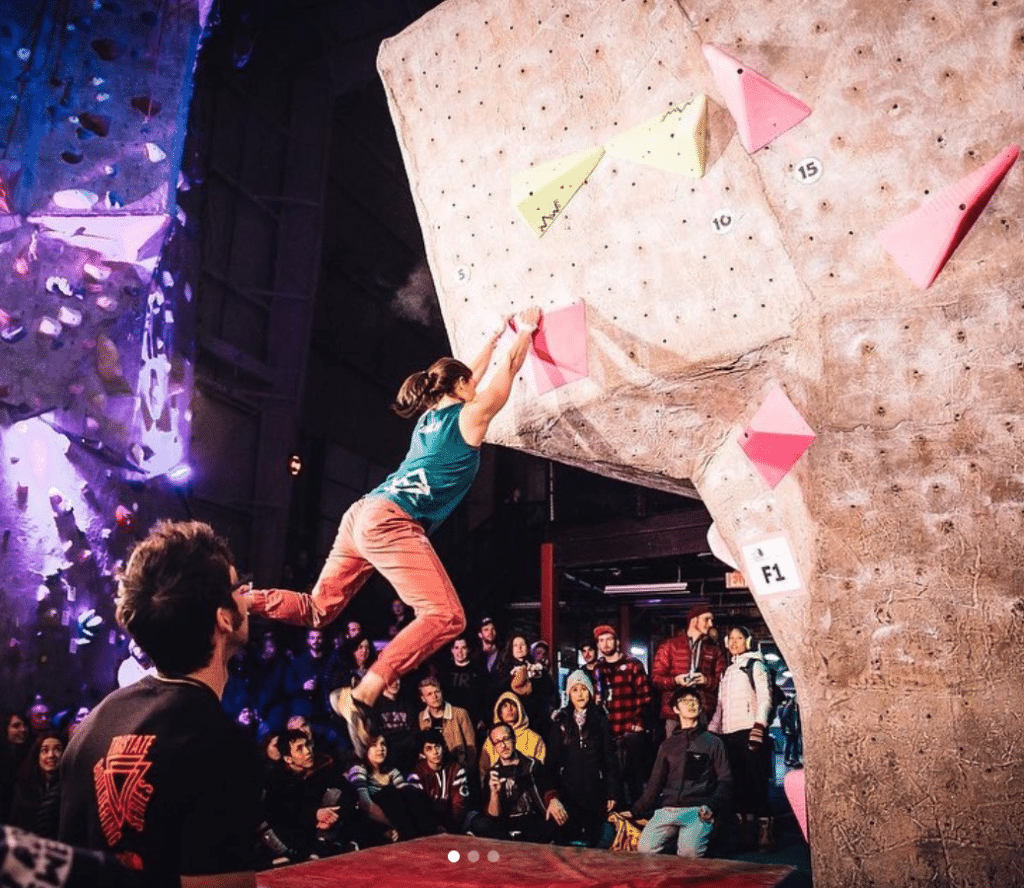The scene takes place in a climbing gym, during a recent “Feats of Strength” event. The idea, as the name suggests, is physical prowess.

The show must go on
The atmosphere evokes Nitro Circus, a Supercross event in the USA, an electronic music concert; it could also be an event organized at one of the venues of Folie Douce It’s indoor, youthful, festive, saturated with noise and cheers, the announcer doesn’t hold back The outdoor light, calmness, rock, and outdoor environment are far away; it’s not a judgment, just an observation The shift in reference compared to the start of the climb is complete.
Why not, but let’s step back a bit.
Part of climbing history takes us to California in the 1960s and 1970s We meet people like Yvon Chouinard, Lynn Hill and the Stonemasters. There’s also talk of Camp 4, where an atmosphere “unanimously recognized as rebellious and on the fringes of established social norms of the time” lingers. At this moment, the echo of the American counterculture still resonates.
The beginnings of climbing
France discovers Patrick Edlinger in the early 1980s, and climbing will likely embody early on what will later become the outdoor universe, leaning heavily towards the mountain. We’re not necessarily talking about counterculture, but the idea is certainly to be different. The first competitions arrive quickly, even though the Manifesto of the 19 indicates that not all minds are aligned, even though the Russians have been organizing speed competitions for a long time.
Climbing remains a free sport, its philosophy embodies this freedom as well as a sort of idealized symbiosis with the rock face.
From outdoor to indoor
The first climbing gyms appeared in the 1990s, but outdoor rock climbing remained the reference. It was only much later that indoor gyms would become successful. By 2024, climbing had become a sport predominantly practiced by urban dwellers indoors ; it is in the Paris 2024 Olympic Games, and the speed event has become technical and athletic. Once again, this is an observation, not a moral or even value judgment. An “alternative” outdoor sport has become a fairly standardized indoor sport. So the audience has changed. The climber’s profile is no longer the same, nor are his cultural references, let alone his expectations.
Another angle to consider, as it is related, is that in recent years, ski resorts have become places of flux: shops and festive venues have multiplied, parking lots, parking meters, traffic jams, public transportation, and saturation are part of the new landscape. Tomorrow Land Winter will take place in Alpe d’Huez Prices per square meter cement this transformation. City references shift and transform the places and lifestyles, at least in the most popular areas. This mountain will not return to the idealized image that Cabrel sang about in “Carte postale”. This mountain won’t go back to the idealized image Cabrel sang about in “Carte postale”.
One could have imagined that the current context (Covid, environmental concerns) would give birth to a society pivoting towards a simpler, less commercial, less competitive, more modest lifestyle. We see that this is not the case; trains and planes are full, roads are congested every weekend, the city expands, and with it, its habits impose themselves.
Which direction the next generation will go, that’s the real debate, that’s the question the future poses to us.
Foresight is not about imagining the scenarios we want, but the ones that actually happen. It’s more difficult.









